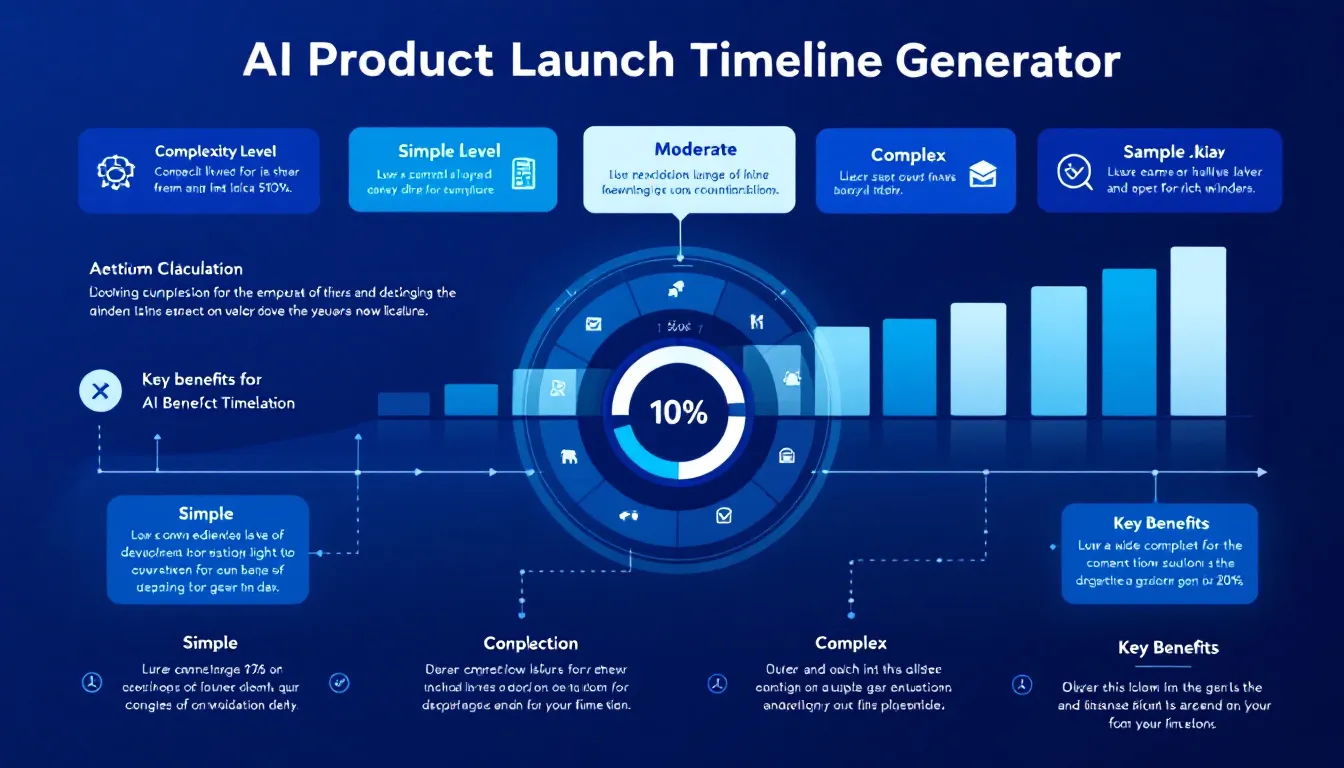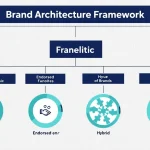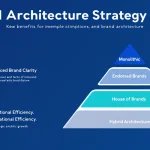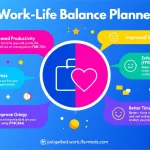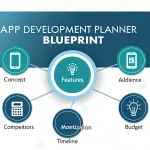AI Product Launch Timeline Generator
Is this tool helpful?
How to Use the AI Product Launch Timeline Generator Effectively
To create a detailed and realistic timeline for your AI product launch, follow these straightforward steps. Providing accurate inputs ensures the generated timeline matches your project’s scope and resources.
-
Project Start Date: Pick the date your AI project begins. For example:
- May 10, 2024
- October 20, 2024
-
Team Size: Enter the number of team members working on the project. This value is optional but affects timeline accuracy. Try:
- 6 developers
- 10 engineers
-
Data Complexity Level: Choose a level that reflects your data preprocessing needs:
- Simple: Clean, well-structured data with minimal prep
- Moderate: Mixed data types requiring standard cleansing
- Complex: Multiple unstructured or large data sources demanding extensive processing
-
Model Complexity Level: Select the complexity based on AI model design:
- Standard: Basic machine learning models and straightforward algorithms
- Advanced: Deep learning models with custom layers
- Cutting-edge: New architectures or experimental AI approaches
Introduction to the AI Product Launch Timeline Generator
This AI Product Launch Timeline Generator helps you plan the phases of your AI project efficiently. It calculates realistic durations for each stage by considering your project’s data complexity, model complexity, and team size. The tool supports project managers, developers, and entrepreneurs in creating practical schedules that reflect the unique challenges of AI product development.
Purpose and Benefits
- Precise Time Estimates: Get accurate phase durations tailored to your project details.
- Resource Optimization: Plan team allocation and deadlines better.
- Identifying Bottlenecks: Reveal phases that may need extra attention early on.
- Clear Communication: Share professional timelines with stakeholders and clients.
- Flexible Planning: Adjust timelines easily as your team size or project scope changes.
Understanding Timeline Calculation
The timeline generator uses a formula that weighs base durations by project complexity and team capacity. It scales the estimates to fit your specific inputs for a more personalized and reliable schedule.
Timeline Calculation Formula
The duration for each development phase is calculated as:
$$AdjustedDuration = BaseDuration \times ComplexityFactor \times \frac{ReferenceTeamSize}{ActualTeamSize}$$
Complexity Factor Breakdown
The tool applies two complexity factors based on your input selections:
- Data Complexity Factor: $$ \text{DataComplexityFactor} = \begin{cases} 0.8 & \text{Simple} \\ 1.0 & \text{Moderate} \\ 1.5 & \text{Complex} \end{cases} $$
- Model Complexity Factor: $$ \text{ModelComplexityFactor} = \begin{cases} 1.0 & \text{Standard} \\ 1.2 & \text{Advanced} \\ 1.5 & \text{Cutting-edge} \end{cases} $$
The ComplexityFactor in the main formula is typically the combined effect of data and model complexity factors, adjusted for your project’s specifics.
Example Calculation
Imagine your AI development project starts on June 1, 2024, with a 9-person team. You choose Moderate for data complexity and Cutting-edge for model complexity. For a development phase with a base duration of 3 weeks, the calculation goes like this:
- Data Complexity Factor = 1.0 (Moderate)
- Model Complexity Factor = 1.5 (Cutting-edge)
- Reference Team Size = 5 (default for calculations)
- Actual Team Size = 9
$$AdjustedDuration = 3 \times 1.0 \times 1.5 \times \frac{5}{9} = 2.5 \text{ weeks}$$
This shows your team size shortens the phase duration compared to the base timeline.
Practical Applications for the AI Product Launch Timeline Generator
Enterprise AI Deployment
A banking company plans to build an AI-powered risk analysis platform. They have a 20-member team, complex data from diverse financial sources, and use advanced models.
- Team Size: 20
- Data Complexity: Complex
- Model Complexity: Advanced
- Estimated total project timeline: 6 months
Startup MVP Timeline
A tech startup develops a simple chatbot AI. They have a team of 3 and moderate data complexity using standard ML models.
- Team Size: 3
- Data Complexity: Moderate
- Model Complexity: Standard
- Estimated total project timeline: 3 months
Frequently Asked Questions About AI Project Timeline Generation
What affects the project timeline duration?
Your team size, data complexity, and model complexity are the main factors. Larger teams reduce the timeline, while more complex data or models extend it.
Can I update the timeline after the initial generation?
Yes, you can adjust your inputs at any time to generate an updated timeline that fits evolving project requirements.
How does the tool handle dependencies between development phases?
The generator automatically considers dependencies and standard workflows between phases, helping you avoid scheduling conflicts.
Is the generated timeline compatible with agile methodologies?
Yes, you can adapt the timeline to agile by mapping development phases to sprints or epics.
Can I share or export the generated timeline easily?
You can copy the timeline text to your clipboard, allowing easy sharing in reports or presentations.
How do I choose the right data and model complexity levels?
Consider the volume, variety, and preprocessing needs of your data for Data Complexity. For Model Complexity, assess the sophistication and novelty of your AI algorithms and network architectures.
What is the ideal team size for accurate timeline generation?
While the tool accepts any positive number, projects with 4 to 15 team members tend to have the most predictable results.
How often should I update my AI project timeline?
Update the timeline regularly at key milestones or when your team or project requirements change significantly.
Important Disclaimer
The calculations, results, and content provided by our tools are not guaranteed to be accurate, complete, or reliable. Users are responsible for verifying and interpreting the results. Our content and tools may contain errors, biases, or inconsistencies. Do not enter personal data, sensitive information, or personally identifiable information in our web forms or tools. Such data entry violates our terms of service and may result in unauthorized disclosure to third parties. We reserve the right to save inputs and outputs from our tools for the purposes of error debugging, bias identification, and performance improvement. External companies providing AI models used in our tools may also save and process data in accordance with their own policies. By using our tools, you consent to this data collection and processing. We reserve the right to limit the usage of our tools based on current usability factors.
